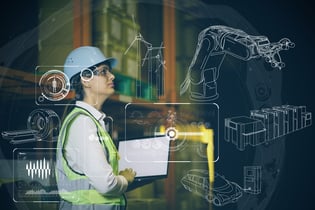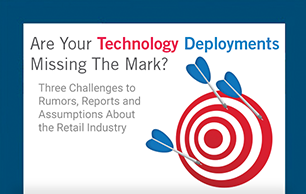According to BI Intelligence, there will be more than 34 billion devices connected to the Internet by 2020. Ushering in a new age of connectivity, convenience and efficiency never before possible, the Internet of Things (IoT) revolution is expected to change the way we live, work and interact.
 Sensors and other similar devices are on the cusp of widespread adoption across businesses and industries of all kinds. Leading the pack with adoption are savvy warehousing and logistics companies that are leveraging IoT devices to reap cost savings, reduce the labor force and prevent losses. Consider some of the applications where IoT devices are delivering new advantages and capabilities.
Sensors and other similar devices are on the cusp of widespread adoption across businesses and industries of all kinds. Leading the pack with adoption are savvy warehousing and logistics companies that are leveraging IoT devices to reap cost savings, reduce the labor force and prevent losses. Consider some of the applications where IoT devices are delivering new advantages and capabilities.
Reduce downtime
Conveyors are the circulatory system of the warehousing/logistics environment. A malfunctioning conveyor causes damage quickly to all parts of the operation. Conveyors have bearings, belts and many moving parts. Sensors can check the oil levels and provide auto alerts when levels are low, preventing a potential outage or damage to the equipment. Sensors can also continuously monitor conveyor performance and generate reports on exceptions – things like speed variations, unexpected stops, etc. This information makes it possible to identify red flags or pre-indications that a conveyor is malfunctioning or close to breaking down so that maintenance can be scheduled before it shuts down the whole operation. At a cost of hundreds of thousands of dollars each hour a conveyor is down, this is a game-changing application.
Ensure integrity
Other sensors help monitor and document the integrity of inventory as it passes through the warehouse to its destination. Temperature monitors are a widely used, proven sensor technology. In refrigerated or frozen storage and transportation units, temperature monitors ensure that the temperature is constantly maintained at the optimal level. If at any time temperatures fall outside the acceptable range, the sensors alert managers in real time so that the inventory can be moved immediately to safe storage conditions if possible. Companies are also using door sensors to provide a guarantee of integrity for the recipients. Door sensors installed on containers indicate if and when the doors have been opened, providing a history of when and where inventory may have been tampered with or inspected. Humidity sensors can be placed inside electronics to indicate if the electronic was immersed in water at any time. This information is valuable when executing repair and warranty.
Protect employees
The latest in self-guided flying sensors, drones’ mobility make them particularly valuable in a warehouse environment, where they can freely roam the area and report back on conditions that may present a problem. Increasingly, drones are being used to identify and alert managers of potential hazards that can then be corrected immediately to avoid injuries. For example, drones can report back on debris blocking the aisles where forklifts and people move quickly. They can identify improperly stacked inventory on the shelves, or propped doors or that are a security hazard. Drones can also report on incorrect usage of forklifts, ladders or other equipment. The early identification and reporting of these potential loss-causing situations can reduce incidences, injuries and problems before they occur.
The applications for IoT sensors are virtually endless, and more and more companies are developing new types of sensors to monitor different conditions. The implications for warehousing/logistics are enormous. By automating previously extremely time-consuming and tedious human validation checks, it is possible to drive labor efficiencies that keep costs down and do an even better job than people, providing a continuous stream of data. The move to IoT automation can also offer companies a competitive advantage in areas from customer service to speed. Documentation of data streamed from IoT devices also proves useful in cases of investigations, audits or inquiries. For companies that have not yet considered the benefits of the move to IoT devices, the time is now.
For more information on how Telaid can help enable the connected warehouse check out our Anatomy of a Connected Warehouse guide.





